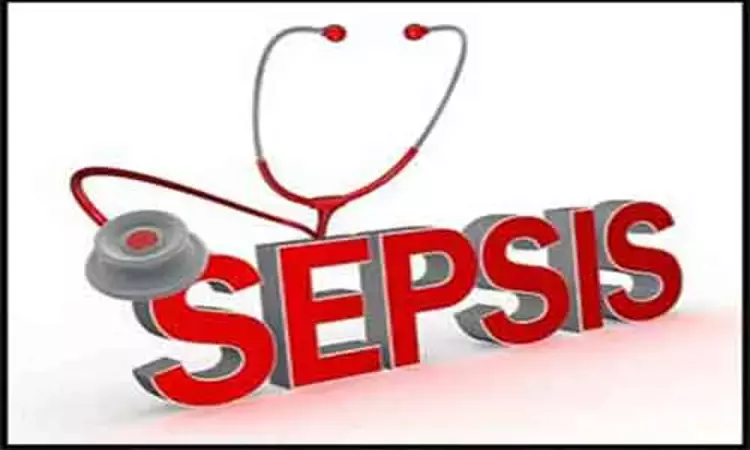- Home
- Medical news & Guidelines
- Anesthesiology
- Cardiology and CTVS
- Critical Care
- Dentistry
- Dermatology
- Diabetes and Endocrinology
- ENT
- Gastroenterology
- Medicine
- Nephrology
- Neurology
- Obstretics-Gynaecology
- Oncology
- Ophthalmology
- Orthopaedics
- Pediatrics-Neonatology
- Psychiatry
- Pulmonology
- Radiology
- Surgery
- Urology
- Laboratory Medicine
- Diet
- Nursing
- Paramedical
- Physiotherapy
- Health news
- Fact Check
- Bone Health Fact Check
- Brain Health Fact Check
- Cancer Related Fact Check
- Child Care Fact Check
- Dental and oral health fact check
- Diabetes and metabolic health fact check
- Diet and Nutrition Fact Check
- Eye and ENT Care Fact Check
- Fitness fact check
- Gut health fact check
- Heart health fact check
- Kidney health fact check
- Medical education fact check
- Men's health fact check
- Respiratory fact check
- Skin and hair care fact check
- Vaccine and Immunization fact check
- Women's health fact check
- AYUSH
- State News
- Andaman and Nicobar Islands
- Andhra Pradesh
- Arunachal Pradesh
- Assam
- Bihar
- Chandigarh
- Chattisgarh
- Dadra and Nagar Haveli
- Daman and Diu
- Delhi
- Goa
- Gujarat
- Haryana
- Himachal Pradesh
- Jammu & Kashmir
- Jharkhand
- Karnataka
- Kerala
- Ladakh
- Lakshadweep
- Madhya Pradesh
- Maharashtra
- Manipur
- Meghalaya
- Mizoram
- Nagaland
- Odisha
- Puducherry
- Punjab
- Rajasthan
- Sikkim
- Tamil Nadu
- Telangana
- Tripura
- Uttar Pradesh
- Uttrakhand
- West Bengal
- Medical Education
- Industry
Case of Unexpected death due to DIC after low anterior resection

Jurij Ales Kosir and colleagues at UMC Ljubljana, Europe, Slovenia have reported a rare case of unexpected death after low anterior resection due to disseminated intravascular coagulation. The case has been published in the International Journal of Surgery Case Reports.
It is important to think of DIC when treating postoperative patients who develop widespread micro thromboses and profuse uncontrollable hemorrhage even in young healthy patients, they noted.
"DIC can be the presenting sign of unrecognized sepsis and it can occur in all surgical patients. Even with prompt treatment, the disease can have a fatal course", describes Kosir, the lead author from the Department of Abdominal Surgery, Ljubljana, Europe, Slovenia.
Disseminated intravascular coagulation (DIC) is a blood clotting disorder that is characterized by intravascular thrombi formation and exhaustion of platelets and coagulation factors resulting in diffuse hemorrhage and multiple organ dysfunction.
The publication describes a case report of a 43-year old male patient who was admitted to the surgery ward of a tertiary center for treatment of rectal cancer. Physical examination revealed a well-nourished man with normal cardiothoracic and abdominal examinations.
Surgical treatment of a low anterior resection with colorectal anastomosis was performed and during the operation, no distant spread of the disease was found.
For the first six days, his postoperative course was uneventful, and the patient was receiving saline infusions until oral feeding commenced, low-molecular-weight heparin for antithrombotic prophylaxis and anti-pain medication, however on the 7th postoperative day, the patient suddenly went into circulatory shock.
Contrast-enhanced CT of the abdomen revealed a collection next to the colorectal anastomosis suggestive of an anastomotic leak.
"Despite our resuscitation efforts, he succumbed to the disease. The postmortem examination showed findings consistent with DIC", says Kosir.
"The cause for DIC in this patient may be multifactorial. Sepsis, tumor-related factors and hereditary predisposition may have played a role. The role of blood components in treatment is not fully understood as they may worsen the inflammatory response", the authors said.
"The occurrence of DIC in our patient may have been triggered by the release of coagulant proteins from manipulation of the tumor and from an infection that was associated with the bowel anastomotic leak and was also later confirmed with positive blood cultures and positive growth from swabs of the abdominal cavity", researchers quoted as the main reason for the occurrence.
Hence, they concluded that, "The clinical course of DIC ranges from asymptomatic to life-threatening. It is important to think of DIC when treating postoperative patients who develop widespread micro-thromboses and profuse uncontrollable hemorrhage even in young healthy patients. There is no doubt that the major determinant of survival is the ability to identify the underlying trigger and manage it successfully."
Dr. Nandita Mohan is a practicing pediatric dentist with more than 5 years of clinical work experience. Along with this, she is equally interested in keeping herself up to date about the latest developments in the field of medicine and dentistry which is the driving force for her to be in association with Medical Dialogues. She also has her name attached with many publications; both national and international. She has pursued her BDS from Rajiv Gandhi University of Health Sciences, Bangalore and later went to enter her dream specialty (MDS) in the Department of Pedodontics and Preventive Dentistry from Pt. B.D. Sharma University of Health Sciences. Through all the years of experience, her core interest in learning something new has never stopped. She can be contacted at editorial@medicaldialogues.in. Contact no. 011-43720751
Dr Kamal Kant Kohli-MBBS, DTCD- a chest specialist with more than 30 years of practice and a flair for writing clinical articles, Dr Kamal Kant Kohli joined Medical Dialogues as a Chief Editor of Medical News. Besides writing articles, as an editor, he proofreads and verifies all the medical content published on Medical Dialogues including those coming from journals, studies,medical conferences,guidelines etc. Email: drkohli@medicaldialogues.in. Contact no. 011-43720751


